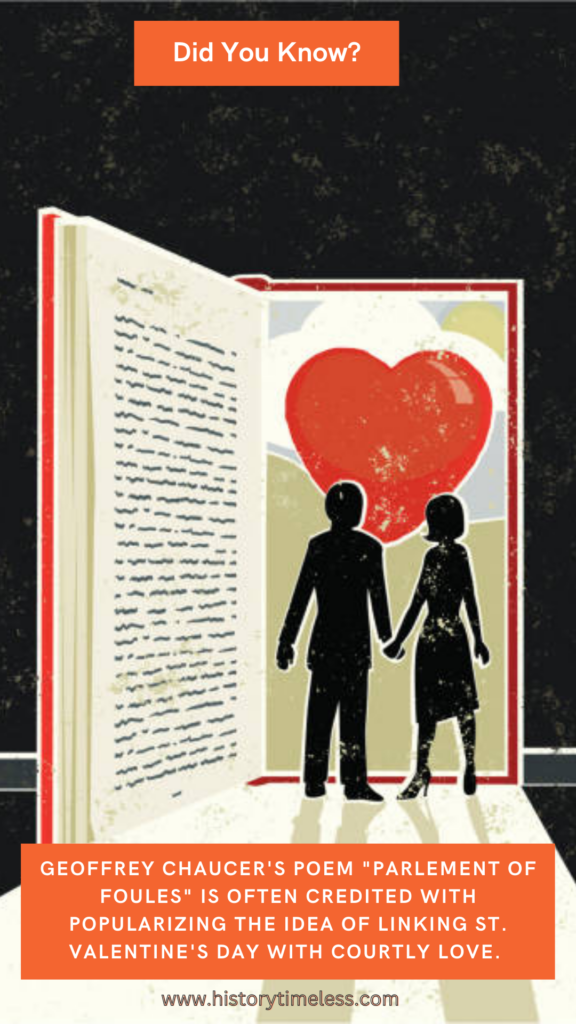Valentine’s Day is a holiday celebrated by people all over the world, but its origins are shrouded in mystery. With its rich history and fascinating evolution, there’s more to this day than just romantic dinners and gift-giving. From ancient Roman festivals to modern-day traditions, the story of Valentine’s Day is complex and intriguing.
1. The Economics of Valentine’s Day
Valentine’s Day is a significant contributor to the global economy, with billions of dollars spent each year on gifts, dining, and other celebratory activities. In the United States alone, the average person spends over $150 on Valentine’s Day-related expenses.
2. The Danish Tradition of Gaekkebrev
In Denmark, Valentine’s Day is celebrated with a unique tradition called “gaekkebrev,” where men send humorous, anonymous poems to women. If the woman correctly guesses the sender’s identity, she wins an Easter egg on Easter Sunday.
3. The Record for Most Valentine’s Day Cards Sent
The Guinness World Record for the most Valentine’s Day cards sent in a single day is held by a woman in the United States, who sent over 1,400 cards in 2017. This feat demonstrates the enduring popularity of Valentine’s Day and the importance of expressing love and affection.
4. The South African Tradition of Wearing Heart-Shaped Pins
In South Africa, women wear heart-shaped pins on Valentine’s Day, pointing either up or down. If the pinpoints up, the woman is single and available; if it points down, she is taken or in a relationship.
5. Chaucer’s Influence on Valentine’s Day
Geoffrey Chaucer’s poem “Parlement of Foules” is often credited with popularizing the idea of linking St. Valentine’s Day with courtly love.

Written in the 14th century, the poem helped establish February 14th as a day for expressing love and affection.
6. The Italian City of Verona’s Connection to Valentine’s Day
The Italian city of Verona, famous for its romantic atmosphere and connection to Shakespeare’s “Romeo and Juliet,” receives thousands of letters each year addressed to “Juliet.” These letters are responded to by a team of volunteers, known as the “Juliet Club.”
7. The Japanese Tradition of Giving Gifts on Valentine’s Day
In Japan, Valentine’s Day is celebrated on two separate days: February 14th and March 14th. On the first day, women give gifts to men, while on the second day, known as “White Day,” men return the favors.
8. The Symbolism of Roses
Roses have been a symbol of love and romance for thousands of years, with different colors holding different meanings. Red roses, in particular, are associated with passionate love, while white roses represent purity and innocence.
9. The History of Chocolate as a Valentine’s Day Gift
The tradition of giving chocolate on Valentine’s Day dates back to the 17th century when cocoa beans were considered a luxury item. Today, chocolate remains a popular gift, with millions of boxes sold each year on February 14th.
10. The Science Behind Love and Attraction

Research has shown that the brain’s reward system is activated when we experience love and attraction, releasing dopamine and other neurotransmitters associated with pleasure and pleasure anticipation. This phenomenon is often referred to as the “chemicals of love.”
11. Martyrdom of Saint Valentine
The Catholic Church recognizes multiple saints named Valentine, with the most famous being Valentine of Terni and Valentine of Rome. According to legend, these saints were martyred on February 14th, leading to the association of the day with courtly love and romance.
12. Ancient Roman Festival of Lupercalia
The ancient Roman festival of Lupercalia, celebrated from February 13th to 15th, involved fertility rites, sacrifices, and pairing of women with men by lottery. This festival laid the groundwork for the modern-day celebration of Valentine’s Day, with its emphasis on love and relationships.
13. The South Korean Celebration of Black Day
In South Korea, April 14th is celebrated as “Black Day,” a holiday for single people. On this day, singles wear black and gather to mourn their solitary status, often with a meal of black noodles.
14. Victorian-Era Valentine’s Day Cards
During the Victorian era, Valentine’s Day cards became a popular way to express love and affection. These cards often featured intricate designs, poetry, and romantic messages, setting the stage for the modern-day greeting card industry.
15. The Tradition of Wearing Red
In ancient Greece and Rome, the color red was associated with the heart and love. This tradition has continued to the present day, with people often wearing red on Valentine’s Day to symbolize passion, love, and romance.
Explore Additional Amazing Facts:
15+ Fun Valentine’s Day Facts That’ll Melt Your Heart
10+ Intriguing Facts About the First Valentine’s Card
History of John Pemberton – The Man Behind Coca-Cola





